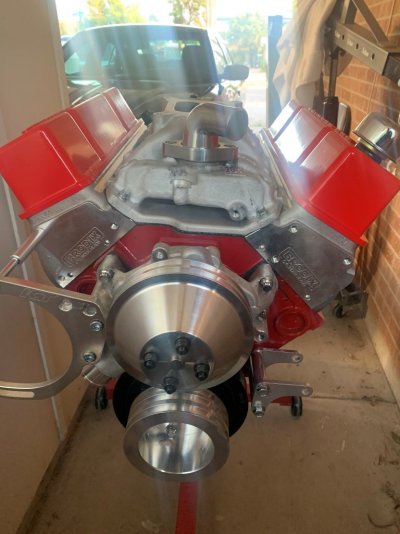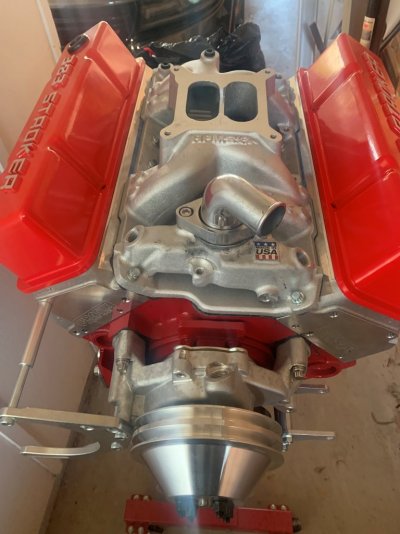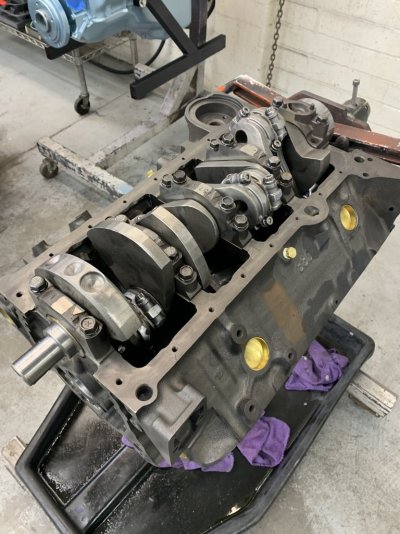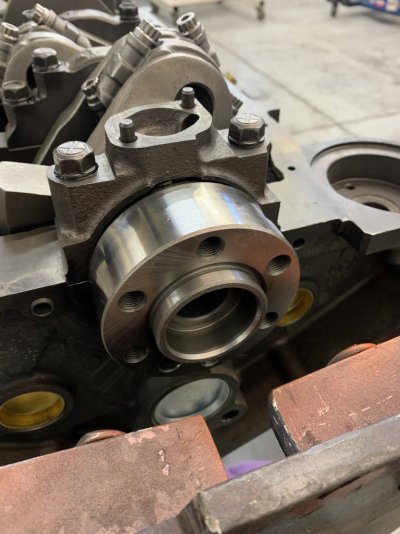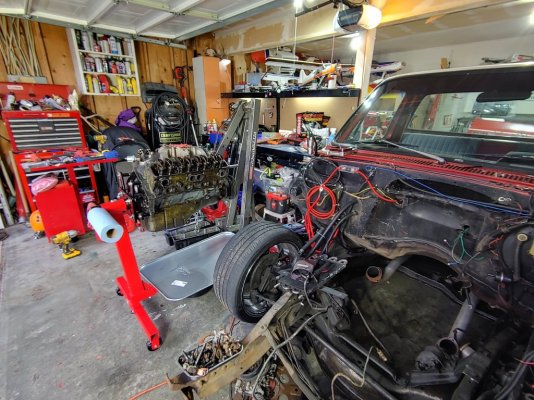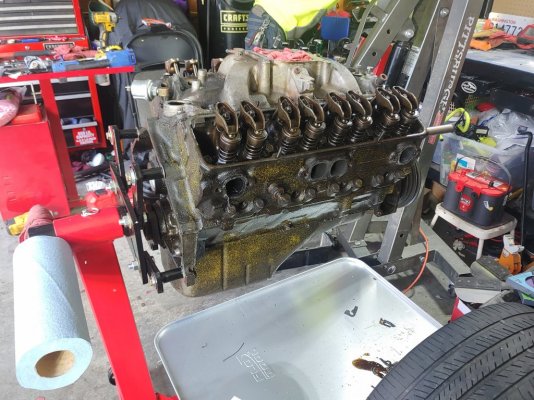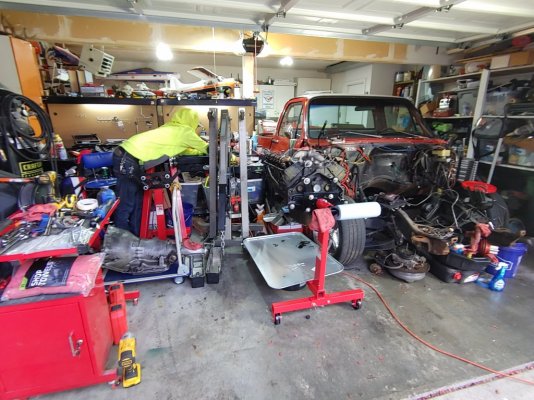Warning: Long. It was a long fight for 2 years? Learned a lot. Hated the truck and engine for a long time. Still kinda do...
I thought my HT383 crate engine with vortec heads was going to be the perfect engine for me based on all the reading and research I did. Turns out everything I read was from people in the southern part (warm) of the US.
The vortec heads removed the heat plenum that went across the intake manifold under the carb/tbi. This was because the vortec heads were designed to run with a multi port fuel injection. With multi port you want the intake manifold as cold as possible because cold air = more power.
I installed the engine in the summer with a q-jet carb. Ran great! Then winter hit. Would start right up, then run for about 30 seconds then start sputtering a bit. With a little throttle it would sputter then clear up again. My drive to work was a few hundred yards thru a residential area, then a left turn onto a highway. 65 mph (3,000 RPM) for about 8 miles. Then a stoplight. It would always sputter and choke a bit upon pulling out into the highway (hated that). Would run good going down the highway. Then at the stoplight would start sputtering again. (Intake manifold was unable to heat up with cold air at 3,000 RPM constantly being sucked in). After maybe 30 minutes if I was doing stop and go driving it would then run good.
I thought it was the carb- as the GM performance manifold didn't have a provision for a thermo-choke riser thing (sorry, can't think of the right name). Played around with an electric choke kit and a manual choke. Gave up and moved to an Edlebrock EFI throttlebody. Now I had cold weather issues along with "heat soak" in summer that caused my idle to surge.

Once again- crappy support from Edelbrock. No help.
Finally heard about the cold weather issues. Additional research showed the GM performance manifold has a very smooth "floor" to the intake under the carb/TBI. This is good for power, but not good for cold weather. Air with fuel suspended in it doesn't like sharp 90 degree changes. Fuel will want to drop out of suspension. Most intakes then have a waffle pattern or some speed bump patterns on them to help fuel droplets break free and get back into the airstream. I ditched the expensive GM performance manifold for an Edelbrock 7116 manifold. This had special fittings so you can get the old heat plenum back under the carb/TBI. They said you could plumb coolant or exhaust to it. I couldn't think of a good way to run exhaust without melting everything- so chose to do coolant. Besides- with vortec heads you are supposed to run a coolant bypass (around the thermostat) to keep temperatures stable. (I tried to not use a bypass before this manifold and water temps would fluctuate greatly every 20 seconds or so on the highway). So it would still sputter on a cold start but maybe 5 minutes in things were much better. Just a little heat and the waffle pattern did the trick!
Then I started losing coolant. Replaced intake manifold gaskets. No help. Bought a graduated cylinder to measure how much coolant I had to add. Found out it was the number of trips and not the mileage that caused coolant to disappear. Meaning I could take 7 short trips of 10 miles round trip would be the same as if two of those trips was 160 miles. Finally found out that after the engine was run and it was shut off that coolant would then slowly seep up thru the manifold itself (porous casting) and then PUDDLE under the carb/TBI. The waffle pattern would hold little puddles of coolant. I called Edelbrock and emailed them. They had NEVER HEARD OF THIS before even with my pictures. They took no responsibility. Like an idiot I figured I was just unlucky enough to get a poorly made "fluke". So I ordered ANOTHER one. Installed it. SAME #@$%$%# thing. I also found out that burning coolant on each start up is bad for my O2 sensor. O2 sensor couldn't handle all the coolant deposits on it and left me stranded a few miles from my house. (TBI went into full rich mode and flooded out the engine so it couldn't run).
At this point I was ready to set the whole thing on fire. Probably spent $7,000 now on this engine? Parked it and bought another daily driver. Didn't have the $$ to "waste" getting maybe the Edelbrock pro-flo multi port fuel injection. Finally out of despair I installed something like a 6 psi radiator cap and dumped in a tube of Alumi-seal (aluminum powder) into the radiator. And I have run like that now for 6 years?
One last thing I learned- this engine has a lot of vacuum to it. When you take air and draw it down into a vacuum the air temp gets colder. I had found it had issues with sputtering a bit with temps even around 40 and below. The colder it was, the worse it was. At 0 degrees or below it would just constantly stall out.





